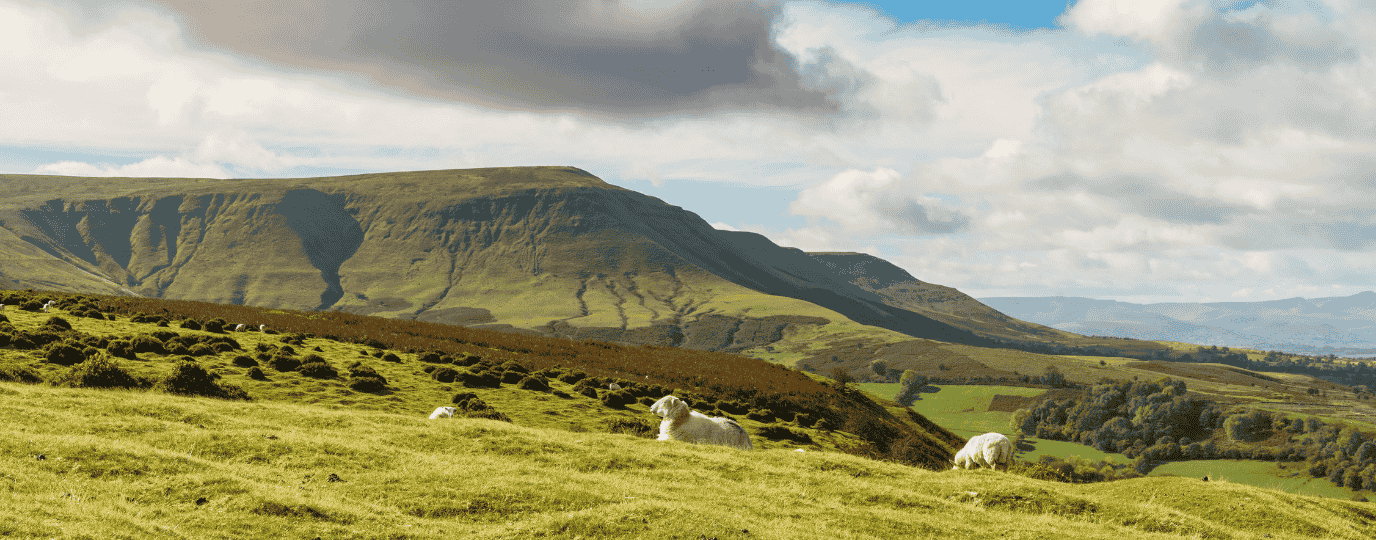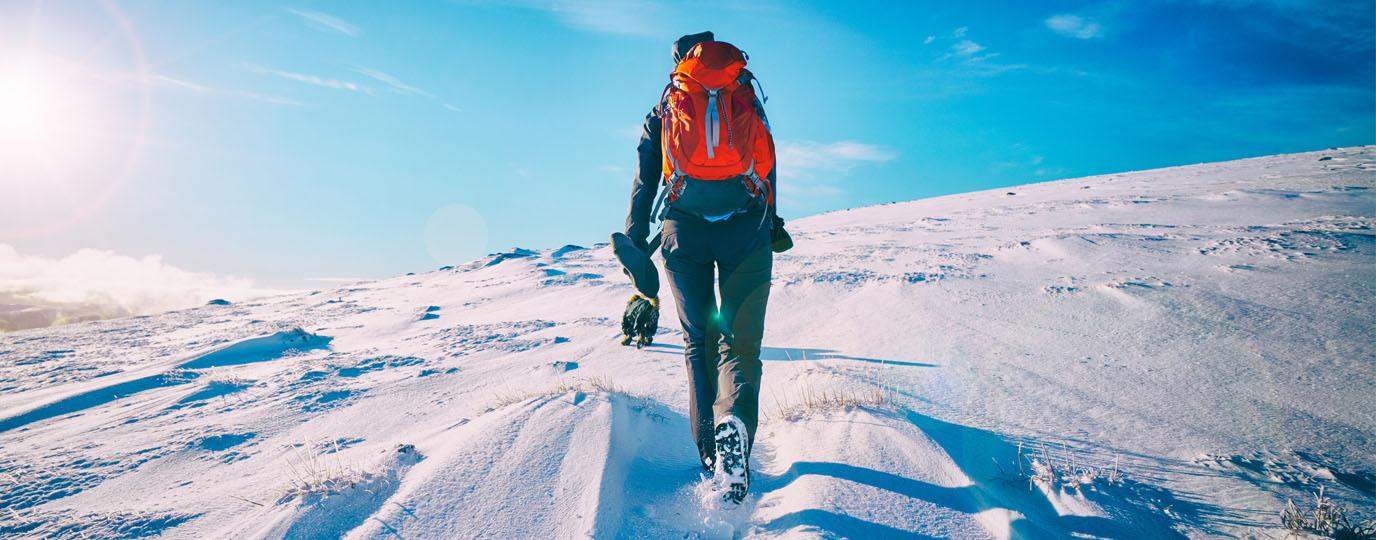Don’t get caught out by the rain, be prepared for your next walk with this wet weather gear guide.
If you spend any time outdoors in the UK, chances are that at some point it’s going to rain! However, this does not mean that you have to stay indoors. Having the right gear can turn walking in the rain from a sodden trudge into such an adventure! Good gear will allow you to spend longer outside, all year round.
Clothing
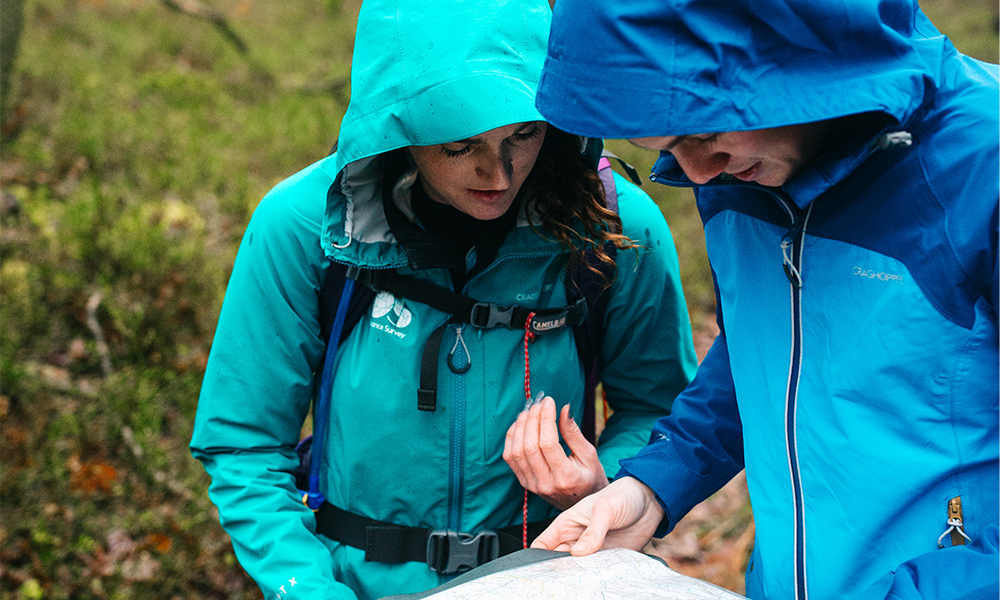
The most critical item is clothing. Ideally, you want a three-tiered layering system which includes a base layer, mid-layer and waterproofs. Whilst the base layer and mid-layer will keep you warm, it’s the waterproofs who will become your best friend when the heavens open! Even the cheapest waterproofs are much better than nothing, but if you are moving quickly or uphill, you are likely to sweat. Cheap waterproofs are not breathable, meaning that the trapped moisture from your body will quickly become uncomfortable.
Breathable waterproof jackets allow some moisture to escape whilst still keeping you dry. There are various brands available with different technologies, but for maximum comfort you want to match the level of breathability to the activity – the more strenuous the activity, the higher breathability rating you need. Some of the other features to look out for are decent-sized pockets (one that can hold an OS map is especially useful), integrated drawstring hoods with a stiff peak, and adjustments to collar, cuffs and waist to prevent water leaking in. Whichever waterproof jacket you choose, ensure that with a backpack on and the hood up you get sufficient protection, but still have freedom of movement.
For waterproof trousers you can either get ones that are designed to be worn all the time, with features similar to breathable jackets, or overtrousers. If buying overtrousers, it’s really useful if you can get them on without removing your shoes, either because they are big enough or have full length zips. Overtrousers are generally more waterproof but less breathable, making them unsuitable for high-intensity activity.
Look out for waterproofs made from GORE-TEX®, Pertex Shield and e-Vent, as these materials will give you good levels of waterproofing and breathability.
Footwear
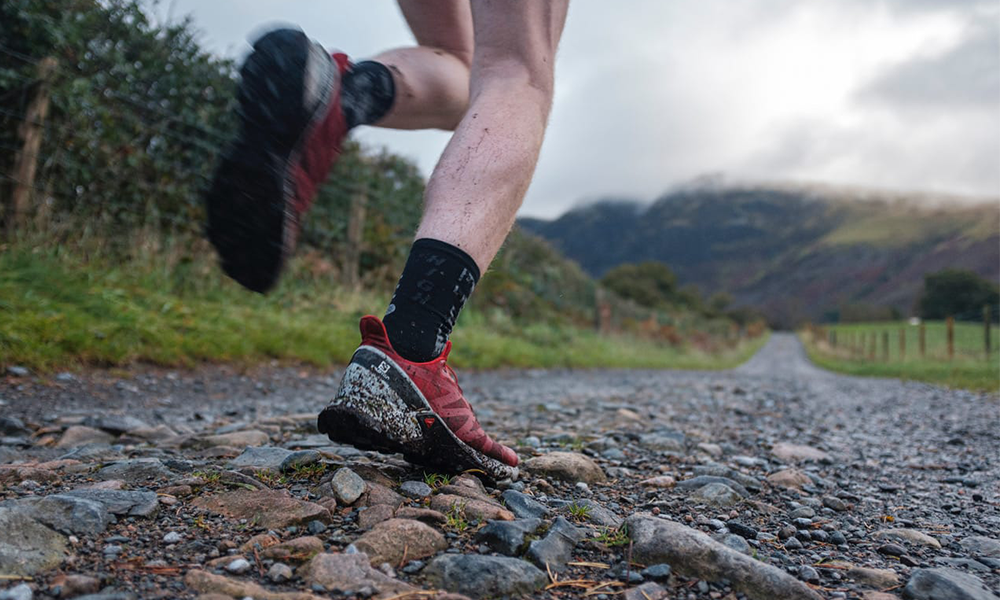
There is much debate about outdoor footwear and ultimately, this comes down to personal preference and the activity you intend to do. Sturdy leather or GORE-TEX® walking boots do a great job at keeping your feet dry and will support you on wet, muddy walks.
Many will argue that some trail running shoes are just as good as boots for rainy days outside and technology in trail shoes has dramatically increased in recent years. You can now get waterproof GORE-TEX® trail shoes with just as good a traction as boots but without the bulk.
If you’re going on a short wet weather walk where it’s likely to be very muddy, then you can always rely on a pair of wellies to keep you completely dry! A decent pair of moisture-wicking socks will help keep your feet warm and free of blisters.
Gaiters
Whether your choice in footwear is waterproof or not, it’s good to have a pair of gaiters to direct water away from your feet and keep debris out. Even after rain has stopped, the grass will stay wet and water will soak into your trousers and down into your shoes. Gaiters cover the bottom half of your leg and the top of your shoes, giving a decent seal. Short ankle (trail) gaiters can be just as good as longer hiking gaiters at keeping the water off and they give you much more freedom to move. If planning a walk through wilder terrain, longer gaiters will help protect your legs more. Like trousers, you can get cheaper waterproof ones, and more expensive breathable versions.
Backpacks
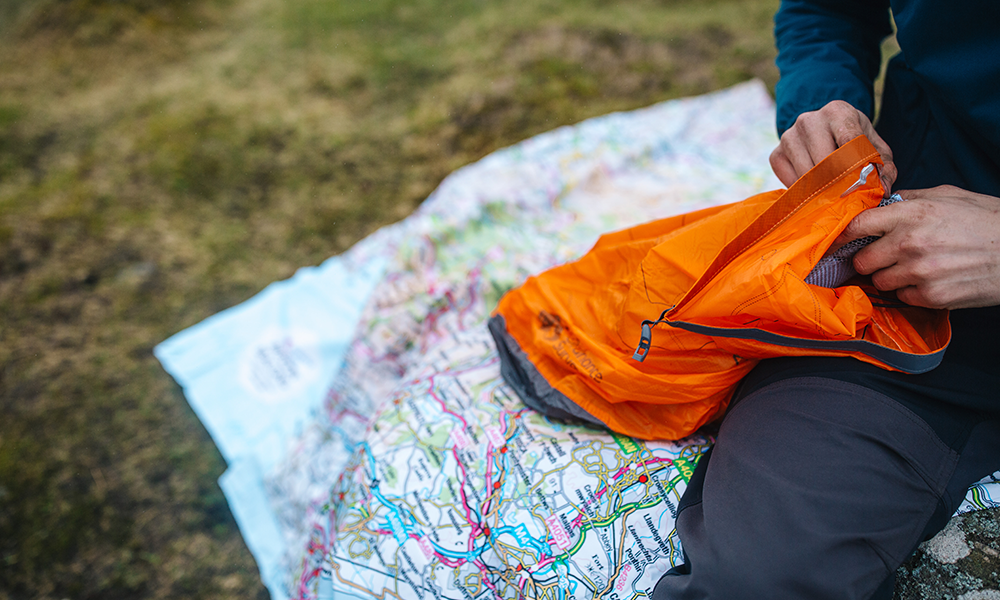
Most backpacks are not waterproof (although you can get some specialist ones that are) but there are a couple of ways to protect your gear from getting wet. An easy way to keep your belongings dry is to line your pack with a heavy-duty bin bag. This costs next to nothing and will ensure all your gear stays clean and dry. A dry bag is advised for items you really don’t want to risk getting wet, like electronics and spare clothes. These come in various sizes and some with fun mappy prints which gives you the option of separating items for better pack organisation. Although more expensive, dry bags are much more durable and long-lasting than a bin liner.
For extra protection, you can also cover your backpack with a rain cover. These are built in to the bottom on some packs or you can buy them separately to fit the exact size of your bag. If you know you’re going to be out in the rain all day or you’re planning a longer trip, it’s sensible to have a pack cover as well as a liner.
One other option is a waterproof poncho designed to cover both you and your pack. These can be quite effective, but do flap in the wind, leaving exposed bits that get wet. On the plus side they are generally quick to get on, and all that flapping makes them fairly breathable.
Essential Kit

Safety comes first and walking in wet weather requires a little more forward thinking. The biggest risk outdoors in wet weather is generally hypothermia, which can set in even in relatively warm weather if your clothes are wet. Even if you’re travelling fast and light it’s still wise to pop an emergency blanket at the bottom of your bag, it hardly weighs anything, and it will help keep you warm when things don’t go to plan. A small first aid kit should also have a permanent home in your pack.
Sometimes our adventures take us past sunset, even if unintentional, so ensure you’ve got a torch for when it gets dark. Whether you’re getting a torch or a headtorch, check that it’s waterproof. Ideally, it should be rated to IPX6 or higher to survive steady rain. Spare batteries need to be kept dry too.
There’s nothing better to boost your spirits on a wet and miserable day than a decent cup of tea! Many portable backpacking stoves are both affordable and lightweight allowing you to enjoy a warm drink wherever you are. While enjoying your hot beverage, why not boil up another for later in the day by keeping it warm in a thermal flask.
Another handy piece of kit that weighs next to nothing is a compact micro towel. You can use this to wipe down anything that’s wet; tents, map cases, or your face! Once saturated, just ring it out and clip it on to your pack to allow it to dry (when it stops raining!).
Maps and Navigation
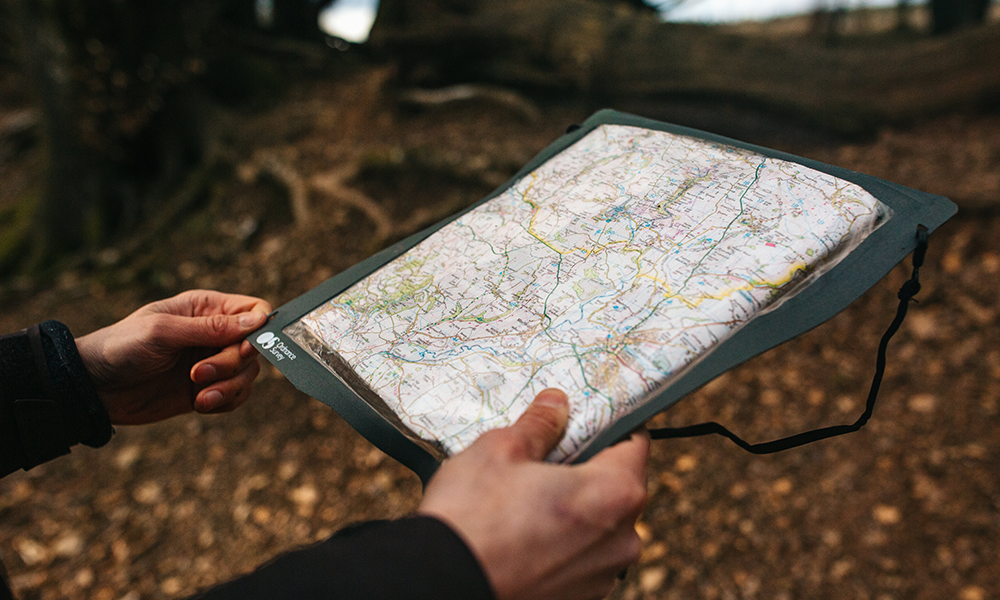
A waterproof map and phone case will be required in rain; paper maps and mobile phones don’t hold up well when wet and it’s important to always know where you’re going!
Even the heavy quality map paper we use will tear easily when soggy. So, either invest in a map case that’s big enough for you to fold the map so the whole route is visible, or upgrade to one of our ‘Active’ maps that have a waterproof coating or print out your route on special waterproof paper. This adds slightly to the bulk, but makes them both water and tear resistant. Traditional compasses are generally waterproof.
Electronics
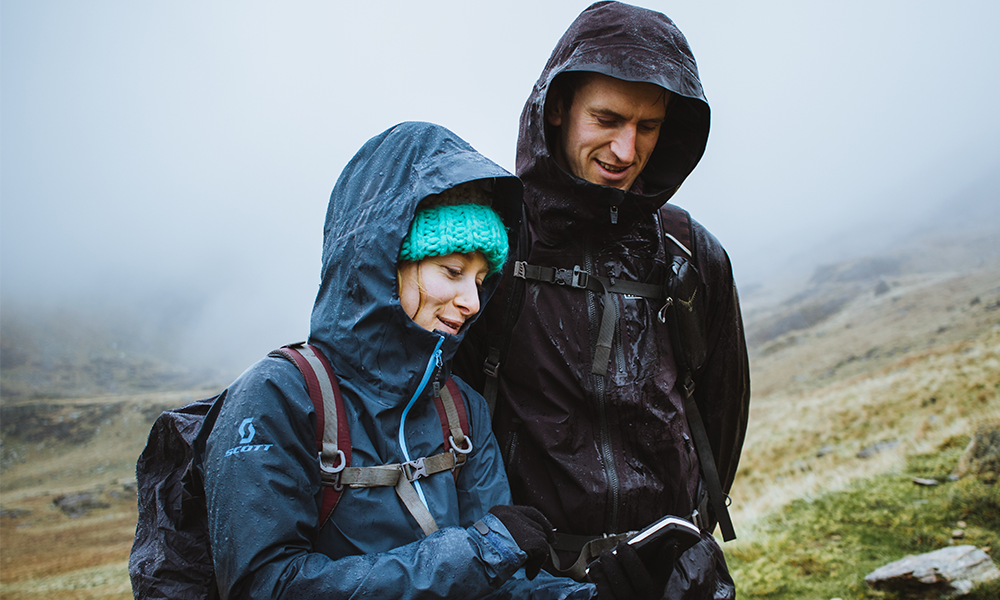
If you are taking anything electronic, you have to be especially wary of both direct rain and moisture. Most GPS devices designed for outdoor use will cope with almost anything British weather can throw at them, but if you use a phone or tablet they can fail very rapidly (and expensively) when wet. While you can use a sandwich bag to protect your device, a better option is a proper waterproof case. The best, like our own OS waterproof case, still allow you to use your touchscreen phone when it’s in the case. Spare batteries and power banks should also be stored in a waterproof bag.
If planning to navigate by phone or tablet, remember to download the necessary maps on the OS Maps app on to your device to use offline. If you don’t know the area well and there’s a chance you may get lost, always bring a paper map and compass or a GPS device with you for back up. Whichever device you bring, ensure you have enough spare batteries or power bank capability to keep it charged for longer than you plan to be out, just in case of emergencies.
The rain really shouldn’t put you off getting outside, it just adds to the adventure! It’s often the days out, where we hadn’t initially felt like braving the elements, that are the most rewarding and the most memorable!

